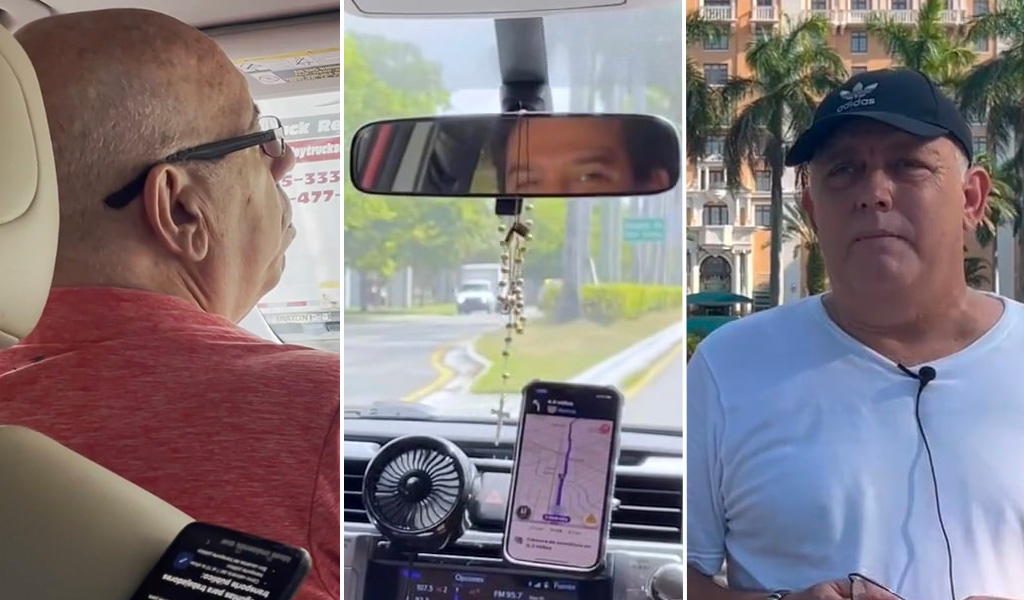Behind the Wheel
Meet a few of the rideshare drivers who keep Miami on the move.

Published on May 30, 2024
Who is truly behind the wheel when public transport fails?
Uber, a rideshare brand, first arrived in Miami in 2014 as a competitor to the popular yellow taxi cabs. Ten years later, taxis no longer have the upper hand in the city. Uber’s main focus is all about meeting the needs of both drivers and passengers.
Nowadays the company doesn’t just provide a way for people to get from point A to point B, it’s also a reliable source of income for drivers, who in the case of Miami are mostly migrants. The company’s website says it supports these groups of people and that it also partners with nonprofits. Moreover, this offers a flexible work schedule, which makes it easier for drivers to stay in this type of job. But there are other options for rideshare companies, such as Lyft. This one is not as spread as Uber, but rather is known for lower priced rides for the passengers and a greater revenue for the drivers.
Orlando, Jorge, Ernesto and Carlos are just a few of the thousands of drivers who navigate Miami streets for a paycheck. They all have their own stories, from Carlos fleeing Venezuela to Orlando raising a family away from his home in Cuba.
And despite their different backgrounds, they’re all looking for the same thing –a way to make a living —although not all of them are doing it the same way. We found that drivers see this job from three different approaches: as a full-time job, as a part-time job, and as a way to make money on the side.
Full-time: Jorge
Jorge is an example of a driver that determines his job in Uber as his only source of income. He receives approximately $200 a day –although this depends on the size of the vehicle (reason why he changed to a larger one), the time of the year, and sometimes even the weather. The 20 minute ride we took with him allowed us to see an open and calm person. This was seen in small actions, such as receiving us with a smile when we got into the Uber or trying to include our colleague that did not speak Spanish into the conversation. Jorge explained to us that he is Venezuelan, but grew up in Portugal. Life brought him to Miami a few times before he decided to stay. But now, nostalgia impregnates his words when he speaks about his home in Venezuela, to which he intends to go back.
Part-time: Carlos & Ernesto
There are other drivers who choose not to entirely rely on the company to pay their bills, taking advantage of the flexibility Uber and Lyft allow its employees and combining their hours on the road with their jobs in other companies. Carlos and Ernesto are two of those drivers.
Carlos left his house, his car and his sister in Venezuela, coming to Miami for a short vacation. His days in Miami started to exceed this vacation so he decided to stay, hoping to visit his home country again, but not planning to return. To date, he has done 2000 trips with Lyft. Different is the case of Ernesto, a 25-year-old Cuban who came to Miami looking for job opportunities. He now works 6 hours a day as an Uber driver and another 6 in Walmart.
“Whenever I want”: Orlando
With a constant smile on his face and with speed in his words, Orlando shared his story. He narrated how he migrated from Cuba to Spain, and then to Miami. He explained that his professional trajectory began with him working as a health care employee and ended up becoming an Uber driver in his retirement. Driving across the palace he married into and the churches where he baptized his daughters, Orlando told us all that was needed to know about Miami streets and buildings.
Connecting Miami
When people get in a cab they only see the back of the driver’s seat. Orlando, Ernesto, Jorge and Carlos told us that just in the first seconds of a ride they know when a passenger wants to start a conversation or not. People look at their phones, take time to think about the day or call someone they love during those rides. But what we have learnt is that just by a simple gesture you can get closer to realities that are hundreds of kilometers away. That is how we got to learn about the wonderful island of Cuba, the grass from Venezuela, or the landscape of Portugal.
Engineers, doctors and health professionals are the ones covering the mobility issues in Miami, which should be the responsibility of the State. They are not just drivers, careers or jobs. They are people with stories that await for someone curious enough to ask about them.
More: Arriving: Never

Miami’s under-developed public transportation system allows rideshare services like Uber and Lyft to thrive. Getting from place to place is a struggle for locals and tourists alike — options are limited and unreliable, heavy urban traffic leads to gridlocks and accidents, and “rush hour” seems infinite.